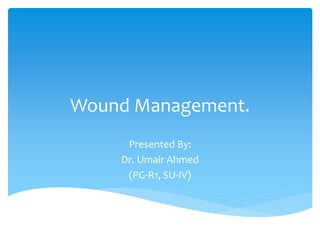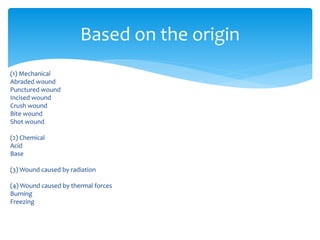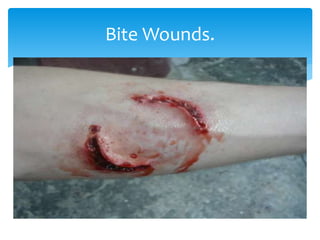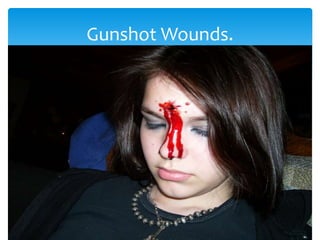This document provides an overview of wound management. It begins with objectives of defining wounds, classifying them, explaining wound healing and general management. It then covers wound classification including by origin, bacterial contamination and shape. The stages of wound healing - hemostasis, proliferation and remodeling - are outlined. Wound management techniques like irrigation, debridement, closure methods and dressings are described. Potential complications are also mentioned.

















































